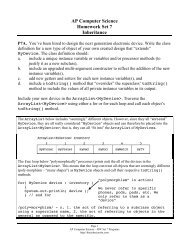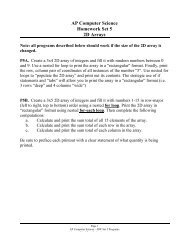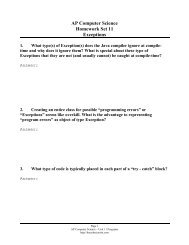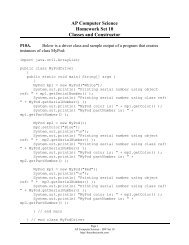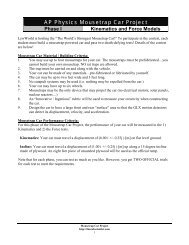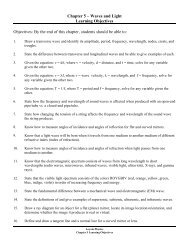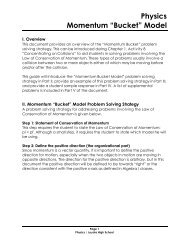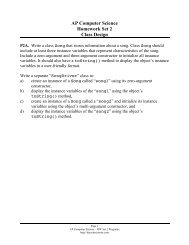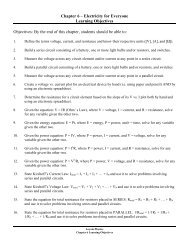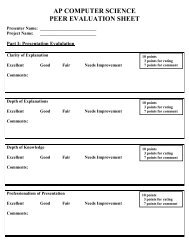Physics Energy “Bucket” Model - thecubscientist.com
Physics Energy “Bucket” Model - thecubscientist.com
Physics Energy “Bucket” Model - thecubscientist.com
You also want an ePaper? Increase the reach of your titles
YUMPU automatically turns print PDFs into web optimized ePapers that Google loves.
33. The speed needed at the bottom of a loop-the-loop track so that a car<br />
can coast to the top, with sufficient speed to stay on the track, depends<br />
on the mass of the car. (Neglect the effects of friction and air resitance)<br />
a. Always true<br />
b. Never true<br />
c. Sometimes true, since kinetic energy is a function of mass<br />
d. Sometimes true, since potential energy is a function of mass<br />
34. An object is lifted vertically 2 m and held there. If the object weighs 120<br />
N, how much work was done in lifting it?<br />
a. 2352 [J]<br />
b. 240 [J]<br />
c. 0 [J]<br />
d. -280 [J]<br />
e. -2352 [J]<br />
35. A projectile of mass m leaves the ground with a kinetic energy of 220 J.<br />
At the highest point in its trajectory, its kinetic energy is 120 J. To what<br />
vertical height, relative to its launch point, did it rise?<br />
a. 220/mg [m]<br />
b. 120/mg [m]<br />
c. 100/mg [m]<br />
d. 50/mg [m]<br />
e. 25/mg [m]<br />
36. Which of the following is not a good example of potential energy?<br />
a. A man on the ledge of a building<br />
b. A stretched spring<br />
c. A car moving on a flat road<br />
d. Water at the top of a waterfall<br />
37. Describe the energy of a car driving up a hill.<br />
a. entirely kinetic<br />
b. entirely potential<br />
c. both kinetic and potential<br />
d. gravitational<br />
Page 20<br />
<strong>Physics</strong> | Loyola High School




